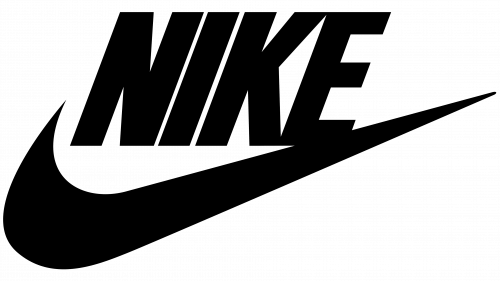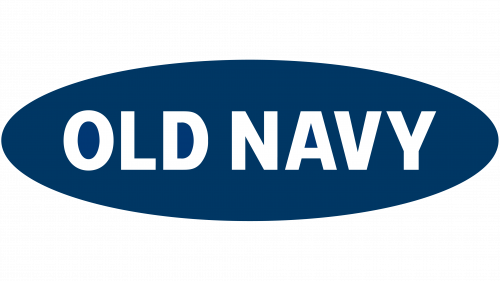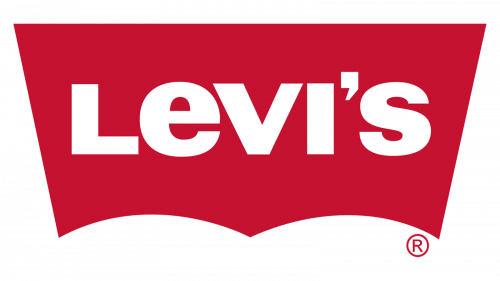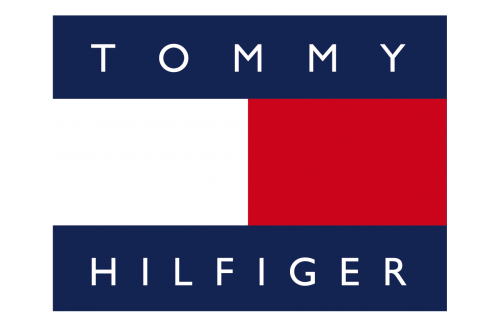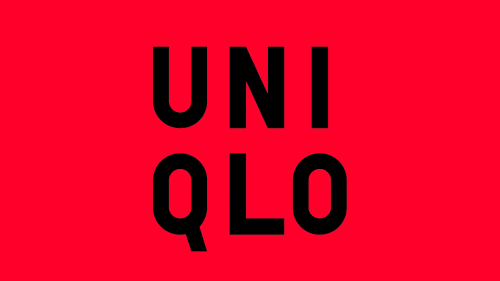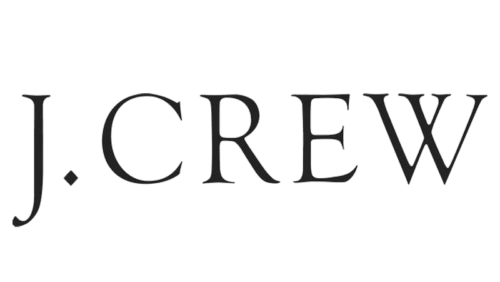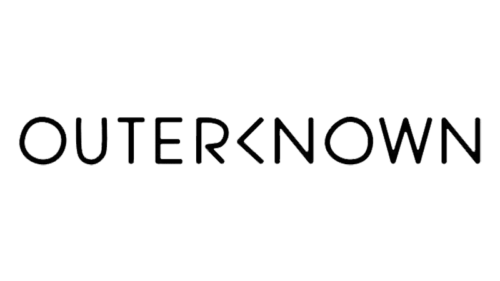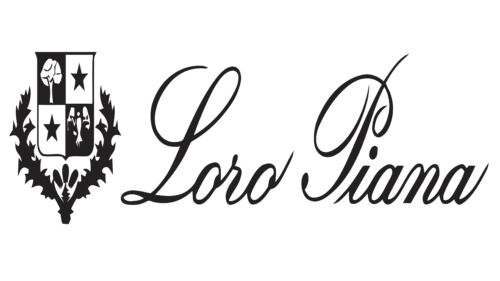In the grand tapestry of modern life, clothing stands out not just as a basic necessity, but as a powerful medium of self-expression. Across cultures and throughout history, attire has been an emblem of identity, a declaration of affiliation, and an artistic canvas celebrating individuality. In today’s globalized world, where trends sprout overnight and spread instantaneously, the significance of choosing the right brand cannot be overstated.
Enter the universe of top-tier clothing brands, the maestros of this sartorial symphony. These are brands that don’t just manufacture garments. They weave stories, craft legacies, and engineer experiences. They understand that clothing isn’t merely about fabric and stitches; it’s about the passion, creativity, and integrity that flow beneath the surface.
But, with a plethora of options and the clutter of advertising campaigns, how does one discern which brands truly resonate with quality, authenticity, and timeless appeal? Are luxury labels the only ones deserving of the title, or can high street brands, with their finger on the pulse of contemporary fashion, stake their claim?
This article embarks on a journey through the intricate labyrinth of fashion to unveil the best clothing brands of our time. We’ll unravel the threads that tie brand legacy to consumer loyalty, quality to sustainability, and innovation to timeless design.
Whether you’re a fashion aficionado with a penchant for couture or someone simply looking for reliable everyday wear, our curated list promises insights that cater to all sartorial sensibilities. So, fasten your seat belts and prepare for a stylish voyage into the heart of fashion’s most esteemed names.
Stay with us as we navigate the vast oceans of the fashion world, from iconic luxury houses to groundbreaking sustainable labels, and everything in between. Your perfect ensemble could be just a page away.
Nike
| Pros | Cons |
|---|---|
|
|
Founded in the heart of Oregon by Phil Knight and Bill Bowerman in 1964, Nike swiftly transformed from a mere distributor of athletic shoes to a global titan in sports attire. The essence of Nike lies in its unyielding drive for innovation and its passion for aiding athletes in achieving their full potential. From the inception of groundbreaking cushion technology like “Air” to the pioneering advancements in fabric with the Dri-FIT range, Nike’s zeal for research and development sets it on a pedestal. Beyond the functional excellence, Nike’s cultural resonance is undeniable. Their iconic Swoosh emblem, coupled with the empowering “Just Do It” mantra, has left an indelible mark on global consciousness. Branching out from the realms of sports, Nike’s footprint is now firmly established in lifestyle and fashion terrains, boasting collaborations with eminent figures from various artistic domains.
Ralph Lauren
| Pros | Cons |
|---|---|
|
|
Ralph Lauren, an embodiment of American luxury since its foundation in 1967, initially ventured into the world of fashion with a distinctive collection of ties. Over time, it burgeoned into a behemoth that seamlessly marries the vintage allure of American style with contemporary refinements. The Polo player insignia, gracefully poised on horseback, encapsulates the brand’s ethos and has become an emblem of its polished, preppy essence. Venturing beyond garments, Ralph Lauren’s influence extends to sumptuous home furnishings, intoxicating fragrances, and even gourmet dining experiences. The brand’s myriad collections, such as the opulent Purple Label or the rustic charm of Denim & Supply, cater to diverse palates, ensuring its offerings remain both versatile and distinguished.
Old Navy
| Pros | Cons |
|---|---|
|
|
Emerging in 1994 under the umbrella of Gap Inc., Old Navy swiftly carved its niche as the go-to destination for quality wear without the hefty price tag. A haven for families and individuals alike, Old Navy champions a universal approach to fashion, ensuring that there’s something for everyone. Stepping into an Old Navy store is akin to embarking on a vibrant journey, with every corner echoing the brand’s vivacious spirit. Their denim range, in particular, has garnered accolades for offering myriad styles and fits, ensuring a tailored experience for each customer. Beyond fashion, Old Navy is at the forefront of sustainable endeavors, transforming discarded jeans into valuable resources, a testament to their holistic approach to the fashion industry.
Levi Strauss & Co.
| Pros | Cons |
|---|---|
|
|
When Levi Strauss & Co. planted its roots during the 1853 San Francisco Gold Rush era, little did they know they were about to birth a legacy in the guise of blue jeans. Today, Levi’s is more than just a brand; it’s an emblem of enduring style and Americana. The quintessential 501 Original jeans, with their iconic rivets and signature patch, have traversed generations and geographies. While the 501s remain a testament to Levi’s heritage, the brand’s expansive range from contemporary denim silhouettes to the iconic trucker jackets underscores its adaptability. Levi’s has always been ahead of the curve, pioneering sustainable practices from water conservation in denim production to championing renewable resources. Through alliances with an eclectic mix of artists and designers, Levi’s has reiterated its position as a dynamic and ever-evolving entity in the global fashion tapestry.
Gap
| Pros | Cons |
|---|---|
|
|
Born out of San Francisco’s cultural milieu in 1969, Gap has woven itself deeply into the fabric of American style. A brand that once stood out for its streamlined basics has now evolved into a global fashion powerhouse. Gap’s ethos revolves around the creation of versatile and comfortable garments – be it the enduring denim jeans, relaxed-fit tees, or snug knitwear. While universally acknowledged for its accessibility and wide appeal, the brand also keeps a keen eye on the trends, making sure it blends contemporary elements into its designs. Gap’s global expansion hasn’t just been geographical; they’ve grown in terms of ethical and sustainable practices, too. Their progressive stance on reducing environmental impact and promoting inclusivity is truly commendable.
Michael Kors
| Pros | Cons |
|---|---|
|
|
With roots tracing back to 1981, Michael Kors isn’t just a brand – it’s a statement. The embodiment of opulence and modern-day luxury, Michael Kors traverses the fashion spectrum with finesse. Though celebrated for its luxe handbags, the brand’s aura doesn’t end there. Michael Kors has, over the years, sculpted a fashion narrative that encompasses sophisticated ready-to-wear collections, distinctive footwear, and a plethora of accessories. At the heart of the brand lies a juxtaposition – every design exudes metropolitan elegance while also hinting at an underlying sporty streak. As one steps into the world of Michael Kors, they’re introduced to a meticulous craftsmanship that celebrates the timeless while also embracing the now.
Coach
| Pros | Cons |
|---|---|
|
|
When one reminisces about Coach’s humble beginnings in a New York City loft in 1941, its metamorphosis into a modern luxury titan is awe-inspiring. What started as an endeavor in leather craftsmanship has blossomed into a fashion empire renowned for its distinctive handbags, chic footwear, and avant-garde apparel. With every stitch and seam, Coach narrates a story that melds its rich leather heritage with innovative design elements. There’s a rugged charm to Coach’s creations, seamlessly merged with a contemporary flair that resonates with fashion aficionados worldwide. As Coach continues its journey, its unwavering commitment to preserving artisanal leather techniques, whilst adopting new-age styles, remains its guiding light.
Tommy Hilfiger
| Pros | Cons |
|---|---|
|
|
Three decades might seem like a short span, but since its inception in 1985, Tommy Hilfiger has redefined American sartorial sensibilities. It’s a brand that celebrates tradition but isn’t shackled by it. At its core, Tommy Hilfiger is audacious – whether through its emblematic tricolor logo or its unabashed use of vivacious patterns. While its offerings span a broad spectrum from suave suits to vibrant sportswear, there’s an unmistakable Hilfiger signature on each piece. The brand’s expansion into diverse domains like fragrances and home decor mirrors its versatile essence. Today, Tommy Hilfiger’s ethos isn’t just about creating clothing; it’s about fostering a global community bound by a shared love for fashion that’s inclusive and sustainable.
Under Armour
| Pros | Cons |
|---|---|
|
|
Originating from a simple idea in 1996, Under Armour has metamorphosed into an athletic apparel behemoth. The brainchild of Kevin Plank, its inception was to craft a T-shirt that outperformed conventional designs, especially in moisture management and thermal regulation. Fast-forwarding to today, the brand commands a diverse product range that caters to both athletes and the general public. One of Under Armour’s distinctions is its relentless drive for innovation. From fabric technologies like HeatGear and ColdGear, suited for specific climatic conditions, to their recovery wear, infused with minerals to enhance recovery post-exercise, the brand never ceases to push boundaries. Their commitment doesn’t stop at product design; it extends to cultivating a culture of resilience and determination among its global consumer base.
Adidas
| Pros | Cons |
|---|---|
|
|
A brainchild of Adolf Dassler, Adidas, with its iconic three stripes, has imprinted its legacy both on sports fields and urban streets. From Herzogenaurach, Germany, the brand’s journey commenced in the 1940s and has seen it evolve, adapting and reinventing, yet remaining iconic. Adidas seamlessly marries its rich heritage with modern flair. This duality is evident in its frequent collaborations with luminaries across fields—whether it’s Yohji Yamamoto’s avant-garde designs or the street cred brought by Kanye West’s Yeezy line. While many associate the brand with style, Adidas is deeply rooted in sustainability, aiming to tread lightly on the earth. Their commitment to a greener future is evident in initiatives like using ocean plastics in shoe designs, underlining their progressive vision.
Uniqlo
| Pros | Cons |
|---|---|
|
|
From the bustling streets of Japan to global urban centers, Uniqlo’s ascent has been nothing short of meteoric. Their ethos is encapsulated in simplicity, transcending fleeting fashion trends and focusing on evergreen designs. While many brands chase the ephemeral, Uniqlo champions enduring style. What sets the brand apart is its deep dive into fabric sciences. Collections like AIRism and HEATTECH are not mere marketing terms but represent rigorous R&D, aiming to enhance the tactile experience of wearers. Price points are democratic, making high-quality apparel accessible. Their strategic collaborations with designers, like JW Anderson and Hana Tajima, introduce a dose of avant-garde, while retaining the brand’s core principles.
Patagonia
| Pros | Cons |
|---|---|
|
|
Patagonia is more than apparel—it’s an ethos, a clarion call to protect our fragile ecosystems. When Yvon Chouinard embarked on this journey in 1973, the objective was clear: create enduring gear for climbers without compromising on environmental ethics. Today, the brand stands as a beacon for sustainability. Patagonia’s commitment is evident in its business model, where a chunk of profits fuels environmental activism. They coin it as the “Earth Tax.” Their product line, whether it’s the trail-blazing fleece jackets fashioned from recycled materials or the organic cotton garments, underscores a promise—a promise of durability without ecological debt. In a world of fast fashion, Patagonia remains resolute, advocating for slow, conscious consumption.
J.Crew
| Pros | Cons |
|---|---|
|
|
Emerging from the heart of American fashion in 1983, J.Crew carved its niche by blending quintessential American aesthetics with contemporary touches. Over the decades, J.Crew hasn’t just been a brand; it’s been a statement of enduring style and unmatched quality. Delving into its collections, one notices the brand’s penchant for taking classic silhouettes and infusing them with a current-day charm. It’s not just about clothes; it’s about a lifestyle. From tailored chinos that hint at heritage to vibrant sequined attires that scream modern chic, J.Crew effortlessly blends the old with the new. Their collaborations have added diverse flair, ensuring the brand remains a dynamic player in today’s fashion scene.
Outerknown
| Pros | Cons |
|---|---|
|
|
When the world hears of Outerknown, they aren’t just hearing about a brand. They’re hearing a tale of sustainability, ethics, and a love for the environment spearheaded by none other than Kelly Slater, the surfing maestro. Setting itself apart, Outerknown delves deep into the fabric of ethical fashion, ensuring every thread tells a tale of sustainability. Their apparel isn’t just inspired by the coast; it’s a tribute to it. From relaxed silhouettes that evoke the free spirit of the waves to their use of organic materials, Outerknown is more than fashion; it’s a movement. Their durable designs aren’t just crafted for longevity but reflect their ethos: timeless fashion, and timeless values.
Loro Piana
| Pros | Cons |
|---|---|
|
|
Hailing from Italy’s picturesque landscapes, Loro Piana isn’t just a brand; it’s a legacy that reverberates luxury, craftsmanship, and an unmatched passion for quality. Spanning centuries, their story is woven with threads of dedication to the finest materials—be it the soft caress of baby cashmere or the rare elegance of vicuña. While many see fashion, connoisseurs see an art form. Loro Piana’s garments whisper tales of elegance, each stitch echoing generations of craftsmanship. Their iconic offerings, from the protective embrace of their storm system jackets to the delicate touch of their scarves, are more than fashion statements—they’re heirlooms.
COS
| Pros | Cons |
|---|---|
|
|
In the vast tapestry of fashion, COS—or ‘Collection of Style’—is the modern minimalist’s dream. Nestled under the vast umbrella of the H&M group since 2007, COS has been more than just attire; it’s a philosophy. A philosophy that celebrates the beauty of simplicity, the elegance in structure, and the timelessness in innovation. Their designs, often reminiscent of modern architectural marvels, play with shadows and light, balancing proportions and textures. While their neutral palette speaks of subtlety, their designs speak volumes. However, COS’s reach isn’t limited to the wardrobe; their frequent forays into art and design collaborations position them as not just curators of style, but as purveyors of a contemporary, cultured lifestyle.
Loewe
| Pros | Cons |
|---|---|
|
|
Spain has gifted the world many things, but few as timeless and elegant as Loewe. Originating in 1846, Loewe began its journey crafting unparalleled leather goods. Today, it stands as a beacon of luxury fashion, combining centuries-old craftsmanship with avant-garde design. The world over, from the streets of Madrid to Milan, Loewe handbags are flaunted, becoming more than just accessories but symbols of status and style. With Jonathan Anderson at the helm, steering its creative vision, Loewe continues to redefine luxury, intertwining its rich legacy with a fresh, contemporary perspective. Every stitch and silhouette embodies a narrative of heritage, groundbreaking creativity, and artisanal mastery.
Tom Ford
| Pros | Cons |
|---|---|
|
|
Glamour finds its truest expression in the house of Tom Ford. Born from the genius of its American founder in 2005, after an illustrious stint at Gucci, Tom Ford’s brand encapsulates the very essence of luxury. Every garment, be it their sensuously tailored suits or their bold evening wear, is a celebration of the wearer. The brand doesn’t just dress individuals; it empowers them. Extending its finesse beyond apparel, Tom Ford’s fragrances and cosmetics range envelops the world in an aura of opulence. The true magic of Tom Ford lies in its duality – crafting pieces that are timeless yet thoroughly modern, classic yet daring.
Conclusion
In today’s eclectic fashion world, choosing the right clothing can be a daunting task. With a plethora of brands vying for attention, selecting one that aligns with one’s style, ethos, and budget is paramount. Throughout this article, we’ve traversed the landscape of the best clothing brands that have made significant marks in the industry.
The brands highlighted not only showcase artistry in design but also emphasize sustainability, ethical production, and a commitment to quality. In an era where fast fashion threatens the integrity of craftsmanship, these brands remind us of the timeless beauty of well-made garments.
It’s noteworthy that fashion is not just about clothing. It’s a reflection of our identity, our values, and our aspirations. The brands we choose to wear can say a lot about who we are and what we stand for. For some, it might be the allure of luxury and exclusivity that draws them to a particular label. For others, it might be the brand’s commitment to environmental sustainability or ethical manufacturing practices that resonate most.
In addition, the adaptability of these brands to the ever-evolving fashion trends while retaining their unique essence has been remarkable. Whether it’s the classic elegance of Chanel, the rugged durability of Levi’s, or the sustainable ethos of Patagonia, each brand offers a unique story, a distinct style, and a promise of quality.
Choosing the “best” brand is subjective and varies based on individual preferences, needs, and values. However, with the information provided, consumers can make informed decisions that suit their sartorial desires while aligning with their personal values.
In closing, the fashion industry is not just about the brands but also about the individuals who wear them. Every purchase is a statement, an expression of self. In a world filled with choices, opting for the best is a reflection of one’s discernment and understanding of true value. It’s a celebration of art, culture, and individuality. So, the next time you find yourself in search of a new piece of clothing, remember the brands discussed and choose wisely. After all, fashion is not just about looking good; it’s about feeling good too.
Best Clothing Brands
- Nike
- Ralph Lauren
- Old Navy
- Levi Strauss & Co.
- Gap
- Michael Kors
- Coach
- Tommy Hilfiger
- Under Armour
- Adidas
- Uniqlo
- Patagonia
- J.Crew
- Outerknown
- Loro Piana
- COS
- Loewe
- Tom Ford



